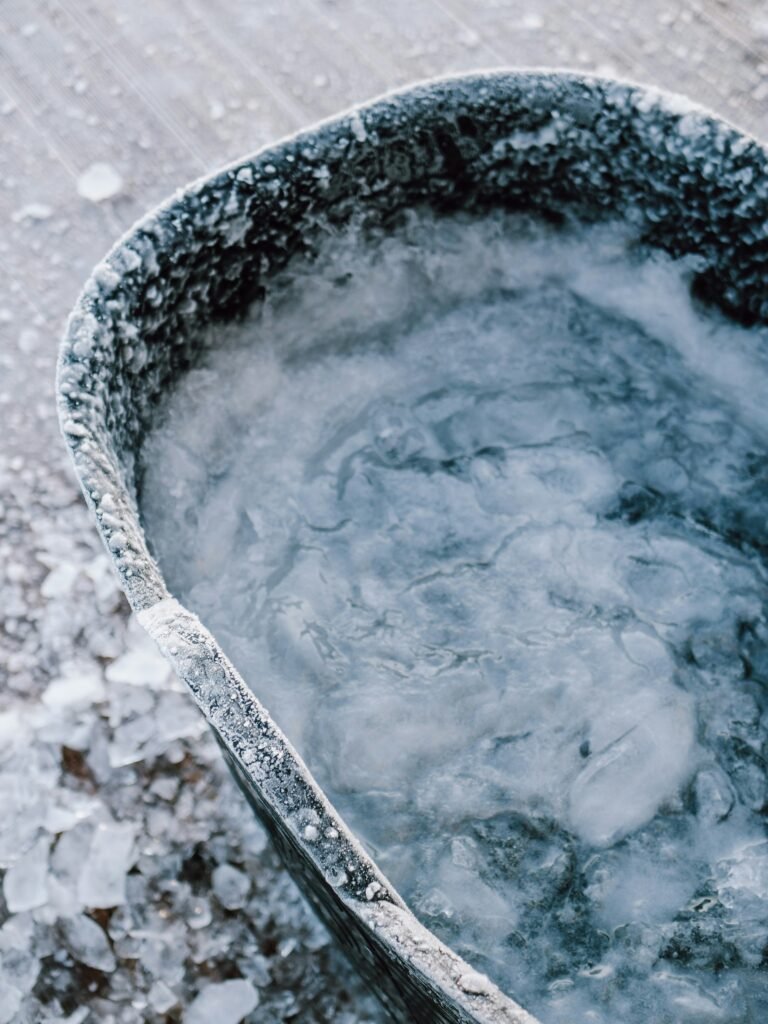Have you ever felt overwhelmed by your emotions and wished for a way to regain control? You’re not alone. Many of us experience periods of emotional turbulence that can disrupt our daily lives. What if I told you there’s a unique tool you can use to manage your emotional state? Cold exposure might just be your answer.
Understanding Cold Exposure
Before we plunge deep into how cold exposure can help with emotional regulation, let’s talk about what cold exposure really is. In simple terms, it involves exposing your body to cold environments or temperatures for short periods. This can range from cold showers and ice baths to simply spending time outdoors in chilly weather.
The Science Behind It
You might be wondering, “Why does cold exposure have any impact on how I feel emotionally?” To understand this, it’s essential to look at the body’s response to cold. When faced with colder conditions, your body undergoes several physiological changes. These changes can trigger a release of endorphins and norepinephrine, two chemicals that can enhance your mood and mitigate feelings of anxiety and depression.
Emotional Regulation: What Is It?
Emotional regulation refers to your ability to manage and respond to your emotional experiences. Instead of being tossed around by your feelings, emotional regulation allows you to navigate life’s highs and lows with a certain level of control. You have the power to choose how to react to your emotions, rather than simply letting them dictate your actions.
Why Is It Important?
The ability to regulate your emotions is crucial for mental health. When you effectively manage your feelings, you reduce stress and increase your resilience to challenges. The benefits aren’t just limited to emotional health; improved emotional regulation can also lead to better relationships, enhanced performance at work, and a greater sense of overall well-being. But how does cold exposure fit into this picture?

Cold Exposure as a Tool for Emotional Regulation
Let’s really get into how cold exposure can serve as a powerful tool for managing emotions. Think of it as training your body and mind to adapt to discomfort. When you expose yourself to cold, you’re teaching yourself resilience.
1. Boosting Mood
One of the most immediate benefits of cold exposure is its ability to elevate your mood. When you step into cold water or a chilly atmosphere, your body releases endorphins. These “feel-good” chemicals can lead to a significant mood boost.
Table: Impact of Cold Exposure on Mood
| Type of Cold Exposure | Potential Mood Effects |
|---|---|
| Cold Showers | Immediate exhilaration |
| Ice Baths | Enhanced emotional resilience |
| Outdoor Cold Exposure | Long-term mood improvements |
2. Reducing Anxiety
Cold exposure can help in reducing feelings of anxiety. It acts as a form of stress but in a controlled manner. When you take a cold shower or plunge into icy waters, your body naturally responds to the shock by releasing stress hormones. In the process, it may help you to better manage and confront anxiety in day-to-day situations.
3. Heightening Emotional Awareness
When you expose yourself to cold, it forces you to be present in your body. This heightened sense of awareness can help you connect with your emotions more deeply. Instead of allowing emotions to wash over you without understanding, cold exposure can create a break allowing you to recognize and process them more effectively.
Different Methods of Cold Exposure
There are various methods for incorporating cold exposure into your routine. You don’t have to jump into an icy lake to experience its benefits. Here are a few methods you can consider:
1. Cold Showers
Starting with cold showers is one of the easiest ways to introduce cold exposure into your life. You might begin with your regular shower routine and finish with a 30-second blast of cold water.
2. Ice Baths
If you’re feeling adventurous, ice baths are another powerful method. Fill your bathtub with cold water and add ice cubes for a real chill. Aim for about 10-15 minutes, but listen to your body and exit if it feels too uncomfortable.
3. Cryotherapy
Cryotherapy involves using cold temperatures to treat injuries and enhance recovery. In recent years, specialized cryotherapy clinics have opened up, utilizing cold air to numb and rejuvenate your body.
4. Outdoor Exposure
Simply spending time outdoors during colder months can also be beneficial. Bundling up and taking a walk can provide the exposure you need while also allowing you to connect with nature—another mood booster.

Preparing for Cold Exposure
Before you start incorporating cold exposure into your routine, it’s wise to prepare yourself both physically and mentally. Here are some steps you can follow:
1. Set Your Intention
Begin by determining why you want to incorporate cold exposure into your routine. Are you looking to boost your mood, reduce anxiety, or simply try something new? By setting a clear intention, you can focus on your goal as you embark on this journey.
2. Start Slow
If you’re new to cold exposure, starting slow is essential. You don’t need to jump right into an ice bath. Instead, alternate between warm and cold water during your showers. As you get used to the sensation, gradually increase your time in the cold.
3. Listen to Your Body
Your comfort is key. While pushing your limits can be beneficial, listening to your body’s signals is vital. If the cold becomes overwhelming, it may be time to back off.
4. Prepare Mentally
Sometimes, the anticipation of facing the cold can be more daunting than the experience itself. Mental preparation can involve deep breathing exercises or visualization techniques to help you stay calm and focused.
Integrating Cold Exposure into Daily Life
So, you’re now well-versed in the benefits of cold exposure. How do you make it a part of your daily routine? Here are a few practical tips:
1. Create a Schedule
If you’re serious about incorporating this practice into your life, create a schedule. Whether it’s starting your mornings with a cold shower or reserving time for an ice bath at night, routine is crucial for benefiting from cold exposure.
2. Connect with Others
Find a buddy who’s interested in cold exposure too. Sharing the experience with someone else can boost your motivation and create a sense of accountability.
3. Track Your Progress
Keep a journal to document your experiences with cold exposure. Note any changes in your emotional state, energy levels, or overall well-being. This practice can help you recognize patterns and celebrate your progress.

Potential Downsides and Cautions
While cold exposure offers many benefits, it’s important to approach it with caution.
1. Not for Everyone
Cold exposure may not be suitable for individuals with certain medical conditions, including cardiovascular issues. Always consult with a healthcare professional before starting cold exposure practices.
2. Risk of Hypothermia
Spending too long in cold environments may lead to hypothermia. Being aware of your limits is crucial.
3. Discomfort
Initially, cold exposure can be overwhelmingly uncomfortable. It’s natural to feel a shock when you first try it, so prepare yourself for initial discomfort. With time, it often becomes more manageable.
Conclusion: Embracing Cold Exposure
The world often feels chaotic, making it challenging to manage emotions effectively. Cold exposure can provide a simple, yet powerful tool to help you regain control over your emotional state. By incorporating cold exposure into your routine, you may find yourself better equipped to handle life’s challenges, one icy plunge at a time.
So, are you ready to embrace the cold? Take that first step. You may just be surprised by the impact it can have on your emotional well-being.


